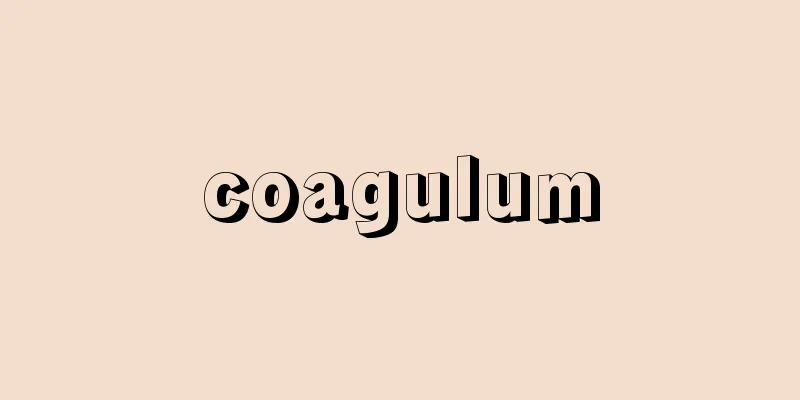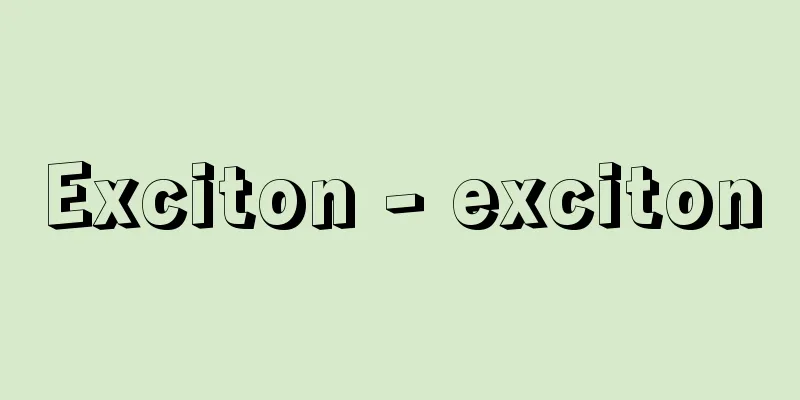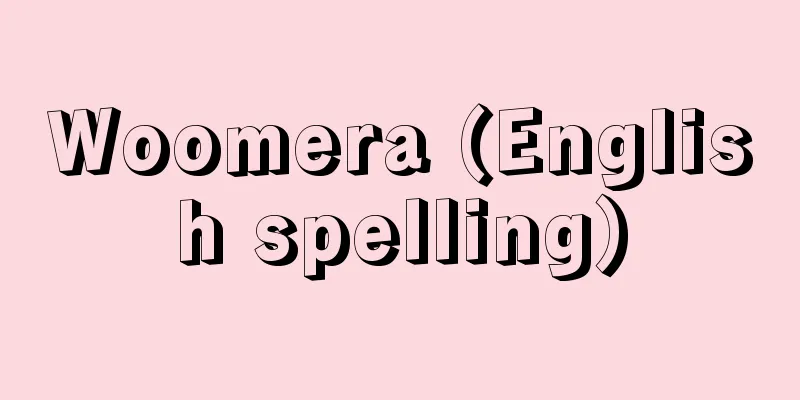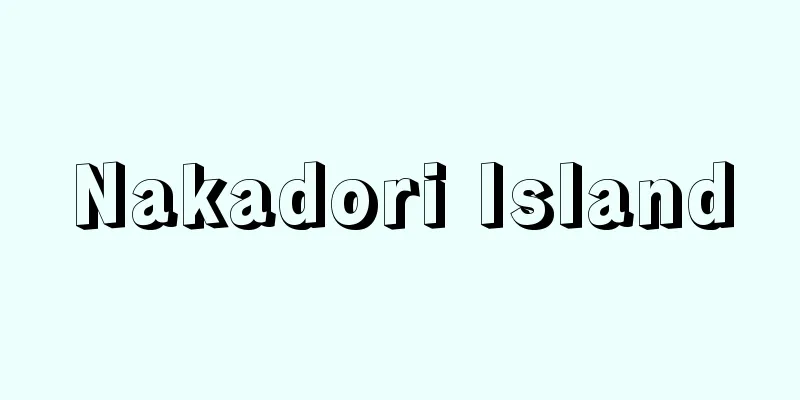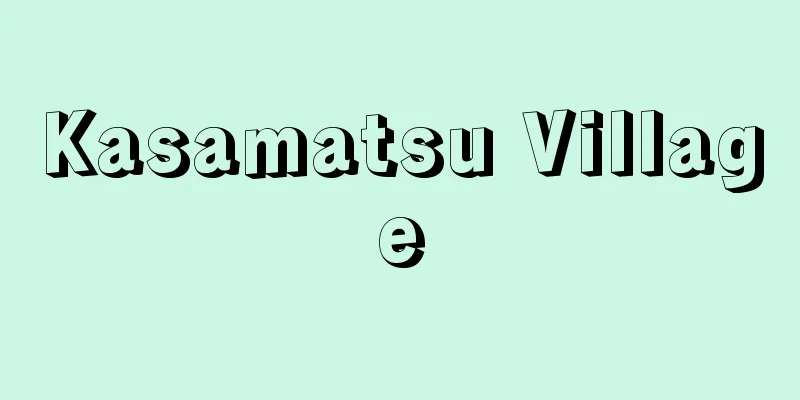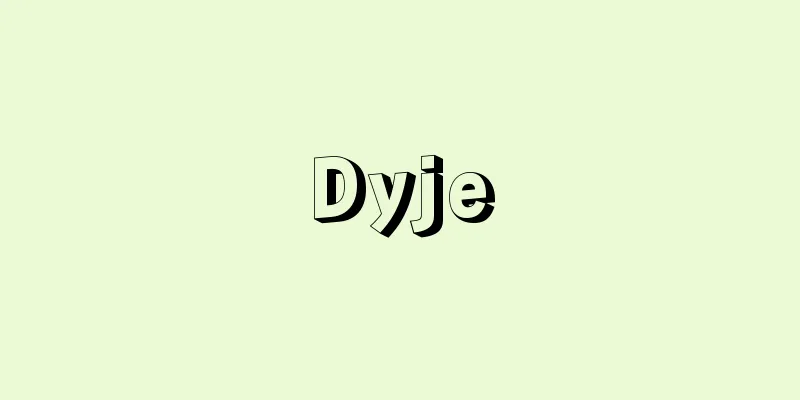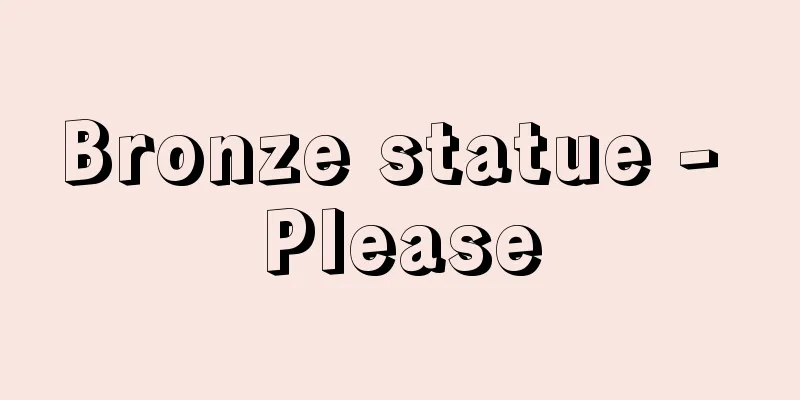Tango - tango (English spelling) tango Spanish
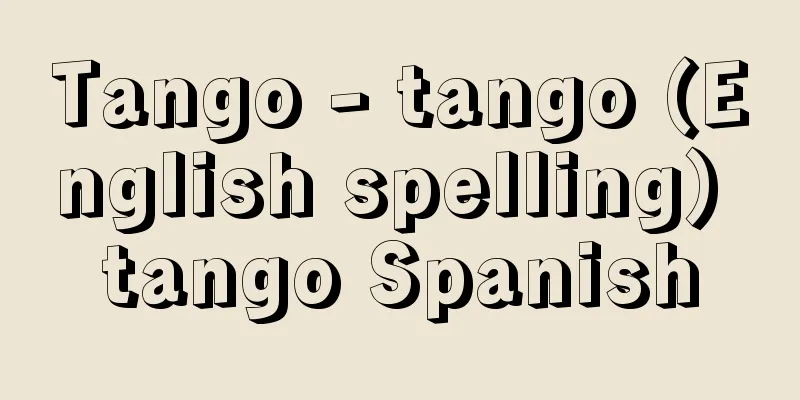
|
A type of Latin American dance music. There are various theories about the origin of the word "tango" and what it refers to, but tango, which is the most famous dance music today and was born in Argentina, is not only loved internationally, but also plays an important role in the social and cultural history of Argentina since the second half of the 19th century. [Kuniko Yui] The origins of tango and its formsTango symbolizes the hopes and successes, or failures and frustrations, of the many European immigrants who flocked to the outskirts of Buenos Aires (Arrabal), and its origins lie in the Cuban habanera and tango (which, together with the habanera, spread throughout Latin America by around 1850), brought to Buenos Aires by sailors in the mid-19th century. Musically, the gaucho (cowboy) tradition of payoda, with its improvised lyrics, and the milonga, with its syncopated 2/4 rhythm, contributed to the development of tango. As for dance, it was influenced to a lesser extent by the tango of Andalusia in Spain (the tango of the Roma people, also known as gypsies, also known as tango flamenco), Cuban danzon and habanera, and European polka and schottisch. It is believed that the name "tango" was first used to describe this dance music around 1875. Tango began as a solo dance for men, but later evolved into a dance for two, with couples dancing while embracing each other. The contrast between the very active movements of the man and the seemingly passive movements of the woman, with the man clearly dominating the woman, is a distinctive feature of the way tango is danced. Tango followed the rhythm of habanera and milonga, and was in 2/4 time until around 1915, but then 4/8 time became predominant, and various complex rhythms began to be used from the mid-1950s onwards. In terms of musical form, ternary form was the norm in the early days, but after Enrique Delfino (1895-1967) began composing pieces in two-part form, two-part form became more common. In this form, the relationship between the dominant key and the relative key is often seen. [Kuniko Yui] Types of Tango and InstrumentationTango can be divided into three types: (1) Tango milonga: An instrumental piece characterized by strong rhythms. (2) Tango Romanza: There are both instrumental and vocal versions, and it is more lyrical and melodic than Tango Milonga, and the songs have very romantic content. (3) tango canción: vocal music with instrumental accompaniment, of a very sentimental nature. Tango canción became a representative form of tango, especially in the 1930s, when tango broke away from the Arrabal underclass and transformed into a more urban, popular music, but tango lyrics, like those of Arrabal songs, continued to be pessimistic and fatalistic, expressing love and life in highly dramatic terms, or expressing rebellion and protest against society. The early instrumentation was called tercetos (trios), and was generally a combination of violin, guitar, and flute. As tango began to be danced in middle-class homes and at balls, many piano solos and songs with piano accompaniment were composed. However, it was the German instrument bandoneon (a type of button accordion) that was introduced at the end of the 19th century that brought about a major change in the instrumentation of tango and, in turn, in the style of performance. The bandoneon, capable of producing crisp rhythms, suddenly became the star instrument in tango performances, and created the heyday of instrumental music in tango. The musicians who were active during this period included Angel Villoldo (1864-1919), Francisco Canaro (1888-1964), Roberto Firpo (1884-1969), and Julio De Caro (1899-1980). Vicente Greco (1888-1924) called his band the Orquesta Típica Criolla, but later the term Orquesta Típica came to refer to an instrumental arrangement consisting of an equal number of violins, a bandoneon, one double bass, and one piano, and to the standard form of tango performance. [Kuniko Yui] The maturation and development of tangoIn the 1920s, with the development of recording technology and the spread of radio, tango became the music that represents Argentina. It was during this period that singer Carlos Gardel (1887-1935) appeared, and around him tango reached the height of its popularity as a song. Gardel is a notable figure in the history of tango, in that he transformed tango, which was originally centered on dance, into song (tango canción) with socio-cultural significance. In the 1940s, larger orchestras with percussion instruments became more common, but the tango scene went into a period of decline from the late 1940s to the 1950s. After the Second World War, however, tango gradually began to recover, and not only the musical interest but also the significance of tango attracted the attention of intellectuals and young people. Famous orchestra conductors active from the 1950s onwards include Carlos Di Sarli (1900-60), Anibal Troilo (1914-75), Juan D'Arienzo (1900-76) and Osvaldo Pugliese (1905-95). Meanwhile, bandoneonist Astor Piazzolla (1912-92) brought a breath of fresh air to the world of traditional tango with the Buenos Aires Octet, which he formed in 1955. Influenced by classical and contemporary music, as well as jazz, Piazzolla introduced improvisation into tango and incorporated electric instruments (electric guitars) into his octet, pursuing an experimental sound based on classical tango. He transformed tango, which had traditionally been music for dancing, into music for appreciation. Piazzolla also composed many film scores, and since the 1990s his music has been taken up by musicians of various genres, including Gidon Kremer, Yo-Yo Ma, the Kronos Quartet, Emanuel Ax, and Al Di Meola. [Kuniko Yui] Tango in EuropeTango was introduced to Europe in the early 1900s, and in 1907 Camille de Rhynal transformed the original wild style of tango into a more sophisticated form suited to balls, and it began to show signs of becoming a big hit, especially in Parisian high society. In 1912, dancers Vernon and Irene Castle made it popular as a new ballroom dance. It was during this time that the famous tango song " La cumparsita " (recorded in 1917) was composed by Uruguayan Gerardo Hernán Matos Rodríguez (1897-1948). After World War I, tango became the most popular ballroom dance. Many Argentinean performers left for Europe, and Gardel in particular had a huge influence on the popularity of tango in Europe. Tango was composed and performed extensively in Europe from the 1920s to the 1930s, and famous songs such as "Ma'am, give me your hand" and "Jealousy" were born. The elegant and melodic tango that originated in Europe and was suitable for social dancing and salon music was called continental tango, while the original tango was called Argentine tango, and they came to be distinguished from each other. While Argentine tango is mainly performed by the Orquesta Typica, Continental tango is often performed by large orchestras without particular instrumentation, and sometimes by jazz bands. Well-known performers of the past include the orchestras of Marek Weber (1888-1964) and Barnabás von Géczy (1897-1971), but later bands such as Alfred Hause (1921-2005) and Malando (1908-80) were also active. [Kuniko Yui] Tango in JapanTango was introduced to Japan in the form of Continental Tango records around 1930 (Showa 5), and later became popular as a social dance in dance halls. For a while, the country relied on imported records and jazz band performances, but it was only after the accordion was imported that a full-scale tango orchestra was formed by Kiyoshi Sakurai. From then until dance halls were closed around 1940, tango reached its heyday, stimulated by the import of bandoneons and the arrival of orchestras from overseas. After the Second World War, many orchestras were born with the revival of dance halls. Among them, Hayakawa Shinpei and Orquesta Typica Tokyo are outstanding for their pursuit of pure Argentine tango, while Hara Kotaro's Tokyo Sextet and Kitamura Koreaki's Tokyo Symphonic Tango Orchestra are outstanding for their pursuit of continental tango. Furthermore, in the 1950s, Sakamoto Masaichi and Orquesta Typica Portenia were formed and rode the wave of broadcasting. Orquesta Typica Tokyo also toured Latin American countries with singer Fujisawa Ranko, receiving favorable reviews. [Kuniko Yui] "Famous Pieces and Records of the World: Latin Folklore Tango" by Nagata Fumio (1977, Seibundo Shinkosha)" ▽ "Tango - History and Bandoneon" by Hematsu Nobuo (1991, Toho Publishing)" ▽ "Astor Piazzolla - Fighting Tango" by Saito Mitsumasa (1998, Seidosha)" ▽ "Tango - Beyond the Centuries" edited by Iwaoka Goro (1999, Ongaku No Tomosha)" ▽ "History of Tango" by Ishikawa Koji (2001, Seidosha)" ▽ "Invitation to Tango" by Remi H., translated by Ogawa Naoya (Hakusuisha, Que sais-je Bunko) [References] | | | | | | | |Source: Shogakukan Encyclopedia Nipponica About Encyclopedia Nipponica Information | Legend |
|
ラテンアメリカのダンス音楽の一種。「タンゴ」の語源およびそのことばがさす対象については諸説があるが、アルゼンチンで生まれた今日もっとも有名なダンス音楽であるタンゴは、単に国際的に愛好されているのみならず、19世紀後半以降のアルゼンチンの社会史・文化史を語るうえで重要な役割を果たすものである。 [由比邦子] タンゴの発生とその形式タンゴは、ブエノス・アイレス近郊の場末町(アラバル)に集まってきた数多くのヨーロッパ移民たちの希望や成功、または失敗や挫折(ざせつ)を象徴するもので、19世紀なかばに船乗りによってブエノス・アイレスにもたらされたキューバのハバネラやタンゴ(ハバネラとともに1850年ごろまでにラテンアメリカ全土に広まる)を原形としている。音楽的には、ガウチョ(カウボーイ)の伝統である即興的な歌詞をもつパヨダと、4分の2拍子でシンコペーションのリズムを特徴とするミロンガが、タンゴの発達に貢献している。またダンスについては、スペインのアンダルシア地方のタンゴ(いわゆるジプシーとよばれていたロマの人々によるタンゴでタンゴ・フラメンコともいう)や、キューバのダンソンとハバネラ、さらにはヨーロッパのポルカやショティッシュがわずかながら影響を与えている。このダンス音楽に「タンゴ」という名称が初めて用いられたのは、1875年ごろと推定される。 なおタンゴは、ごく初期には男性のソロ・ダンスであったものが2人のダンスとなり、のちには男女のカップルが抱き合って踊るようになった。非常に行動的な男性の動きと一見受け身な女性の動きが対照的であり、明らかに男性が女性を支配していることが、タンゴの踊り方の特徴である。 タンゴはハバネラやミロンガのリズムに従って、1915年ごろまでは4分の2拍子であったが、その後8分の4拍子が優勢になり、50年代なかば以降はさまざまの複雑なリズムが使われるようになった。また楽曲の形式は、初期には三部分形式が主であったが、エンリケ・デルフィーノEnrique Delfino(1895―1967)が二部分形式の曲をつくり始めてから、二部分形式が多くなった。この形式においては、主調に対する属調あるいは平行調という関係が多くみられる。 [由比邦子] タンゴの種類と楽器編成タンゴは次の3種に分類することができる。 (1)タンゴ・ミロンガtango milonga 器楽曲で、強烈なリズムを特徴とする。 (2)タンゴ・ロマンサtango romanza 器楽のみのもの、歌を伴うものの両方があり、タンゴ・ミロンガよりも叙情的・旋律的で、歌は非常にロマンチックな内容をもつ。 (3)タンゴ・カンシオンtango canción 器楽伴奏つきの声楽曲で、非常に感傷的な性質をもつ。 タンゴ・カンシオンは、とくに1930年代にタンゴがアラバルの下層社会と縁を切ってより都会的なポピュラー音楽に成り変わったとき、その代表的なものとなった。しかしタンゴの歌詞はアラバルの歌の性質を受け継いで悲観的・運命論的であり、きわめてドラマチックなことばで愛と人生を表現し、あるいは社会に対する反発・抗議を表し続けたのである。 初期の楽器編成はテルセトス(トリオ)とよばれ、バイオリン、ギター、フルートの組合せが一般的であった。そしてタンゴが中流階級の家庭や舞踏会で踊られるようになると、ピアノ独奏曲やピアノ伴奏による歌曲も数多く作曲されるようになった。しかしタンゴの楽器編成、ひいては演奏スタイルに大きな変革をもたらしたのは、19世紀の終わりに取り入れられたドイツの楽器バンドネオン(ボタン式アコーディオンの一種)である。歯切れのよいリズムを奏することのできるバンドネオンは一躍タンゴ演奏の花形楽器となり、タンゴにおける器楽曲全盛期をつくりだすことになる。この時期に活躍したのは、アンヘル・ビジョルドAngel Villoldo(1864―1919)、フランシスコ・カナロFrancisco Canaro(1888―1964)、ロベルト・フィルポRoberto Firpo(1884―1969)、フリオ・デ・カロJulio De Caro(1899―1980)などである。ビセンテ・グレコVicente Greco(1888―1924)は自分のバンドをオルケスタ・ティピカ・クリオーラと称したが、この後オルケスタ・ティピカOrquesta Típicaは、同数のバイオリンとバンドネオン、コントラバス1台、ピアノ1台を中核とする楽器編成をさし、タンゴの標準的な演奏形態を示すようになった。 [由比邦子] タンゴの成熟と発展1920年代には録音技術の発達やラジオの普及に伴って、タンゴはアルゼンチンを代表する音楽となった。またこの時期に歌手カルロス・ガルデル(1887―1935)が現れ、彼を中心にタンゴは歌曲全盛期を迎えた。ガルデルは本来ダンス中心であったタンゴを社会文化的意義をもつ歌曲(タンゴ・カンシオン)に変えたという点で、タンゴ史上注目に値する人物である。 1940年代になると、打楽器を加えたより大規模なオーケストラ編成が優勢になるが、40年代後半から50年代にかけてタンゴ界はしばし不振の時期となる。しかし第二次世界大戦が終わるとタンゴは徐々に息を吹き返し始め、単に音楽的興味のみならず、タンゴのもつ意義が知識人や若者層の注意をひくことになった。50年代以降に活躍した楽団指揮者では、カルロス・ディ・サルリCarlos Di Sarli(1900―60)、アニバル・トロイロAnibal Troilo(1914―75)、フアン・ダリエンソJuan D'Arienzo(1900―76)、オスバルド・プグリエーセOsvaldo Pugliese(1905―95)らが有名である。 一方、バンドネオン奏者のアストル・ピアソラ(1912―92)は、1955年に結成したブエノスアイレス八重奏団によって伝統的なタンゴの世界に新風を吹き込んだ。ピアソラはクラシックや現代音楽、さらにはジャズの影響を受けてタンゴに即興演奏を導入、八重奏団にも電気楽器(エレキ・ギター)を取り入れるなどして、古典タンゴを土台に実験的なサウンドを追求した。そして、従来は踊るための音楽であったタンゴを鑑賞用音楽に変えたのである。映画音楽も多数作曲したピアソラの音楽は、90年代に入ってから、ギドン・クレメル、ヨーヨー・マ、クロノス・カルテット、エマニュエル・アックス、アル・ディ・メオラなどさまざまなジャンルの音楽家に取り上げられている。 [由比邦子] ヨーロッパにおけるタンゴタンゴは1900年代の初めにヨーロッパに紹介され、07年にカミーユ・ド・リーナルCamille de Rhynalがタンゴ本来の荒々しい踊り方を舞踏会向きの洗練された形に変えてから、パリの社交界を中心に大流行の兆しをみせ始めた。さらに12年には舞踏家カッスル夫妻Vernon & Irene Castleによって新しい社交ダンスとして人気を集める。タンゴの名曲『ラ・クンパルシータ』La cumparsita(レコード発売1917)がウルグアイのヘラルド・エルナン・マトス・ロドリゲスGerardo Hernán Matos Rodríguez(1897―1948)によって作曲されたのはちょうどこの時期である。そして第一次世界大戦後にはタンゴはもっともポピュラーな社交ダンスとなった。多くの演奏家がアルゼンチンからヨーロッパに流出したが、とくにガルデルはヨーロッパにおけるタンゴの大流行に非常な影響を及ぼした。 1920年代から30年代にかけてはヨーロッパでもタンゴが盛んに作曲・演奏され、『奥様お手をどうぞ』や『ジェラシー』などの名曲も生まれた。このように社交ダンスやサロン・ミュージックに適したヨーロッパ生まれの優雅で旋律的なタンゴはコンチネンタル・タンゴとよばれ、それに対して本来のタンゴはアルゼンチン・タンゴとよばれて区別されるようになったのである。アルゼンチン・タンゴがおもにオルケスタ・ティピカによって演奏されるのに対して、コンチネンタル・タンゴは楽器編成にこだわらず、大編成のオーケストラで演奏されることも多く、ときにはジャズ・バンドによる場合もある。往年の演奏家としてはマレク・ウェーバーMarek Weber(1888―1964)やバルナバス・フォン・ゲッツィBarnabás von Géczy(1897―1971)の楽団が有名であるが、その後もアルフレッド・ハウゼAlfred Hause(1921―2005)やマランドMalando(1908―80)の楽団が活躍した。 [由比邦子] 日本におけるタンゴ日本には、1930年(昭和5)ごろコンチネンタル・タンゴのレコードという形で紹介されたが、その後ダンスホールで社交ダンスとして普及するようになった。しばらくは輸入レコードやジャズ・バンドの演奏に頼っていたが、アコーディオンが輸入されて初めて本格的なタンゴ・オーケストラが桜井潔(きよし)によって結成された。それから1940年ごろにダンスホールが閉鎖されるまで、バンドネオンの輸入や海外からのオーケストラの来日に刺激され、タンゴの全盛期となる。 第二次世界大戦後はダンスホールの復活とともに多くのオルケスタが生まれたが、なかでも早川真平(しんぺい)とオルケスタ・ティピカ東京は生粋(きっすい)のアルゼンチン・タンゴを、また原孝太郎の東京六重奏団や北村維章(これあき)の東京シンフォニック・タンゴ・オーケストラはコンチネンタル・タンゴをそれぞれ追求する楽団として、ともに傑出している。さらに1950年代には坂本政一(まさいち)とオルケスタ・ティピカ・ポルテニアが結成され、放送の波にのった。またオルケスタ・ティピカ東京は歌手の藤沢嵐子(らんこ)とともにラテンアメリカ諸国へ公演旅行し、好評を博した。 [由比邦子] 『永田文夫著『世界の名曲とレコード ラテン・フォルクローレ・タンゴ』(1977・誠文堂新光社)』▽『舳松伸男著『タンゴ――歴史とバンドネオン』(1991・東方出版)』▽『斎藤充正著『アストル・ピアソラ――闘うタンゴ』(1998・青土社)』▽『岩岡吾郎編『タンゴ――世紀を超えて』(1999・音楽之友社)』▽『石川浩司著『タンゴの歴史』(2001・青土社)』▽『レミ・エス著、尾河直哉訳『タンゴへの招待』(白水社・文庫クセジュ)』 [参照項目] | | | | | | | |出典 小学館 日本大百科全書(ニッポニカ)日本大百科全書(ニッポニカ)について 情報 | 凡例 |
Recommend
"Revised Western History Edition" - Kaisei Saigokuri Sshihen
...The company name Shueisha, which was used unti...
Ceramic semiconductor - Ceramic hand-held device (English spelling) ceramic semiconductor
A ceramic that exhibits semiconductivity. Semicond...
Augustus [II] - Augustus
King of Poland (reigned 1697-1733). Known as the S...
Adenovirus - Adenovirus (English spelling)
A general term for viruses belonging to the Adeno...
Darkness Festival - Kurayami Festival
This is a festival where the lights are turned of...
Film Control Board
...In other words, the golden age of Japanese cin...
rime riche (English spelling) rimeriche
…Western and Chinese poetry have traditionally us...
Irumeya - Irumeya
…Many of his prophecies are in poetic form and ar...
Gakusou - Gakusou
...He was at the center of the so-called San'...
Ashima - Ashima
…After liberation, he was transferred from Tsingh...
Literary Front - Bungei Sensen
A literary magazine. It was first published as a ...
Internal virtue - Naitoku
〘Noun〙① Virtue that is accumulated in the heart an...
Katsura
...In the Edo period, when the five-part program ...
śulka (English spelling) sulka
…However, even if the wife was at fault, it was v...
Roman Dmowski
Polish politician. Born into a family of craftsme...
